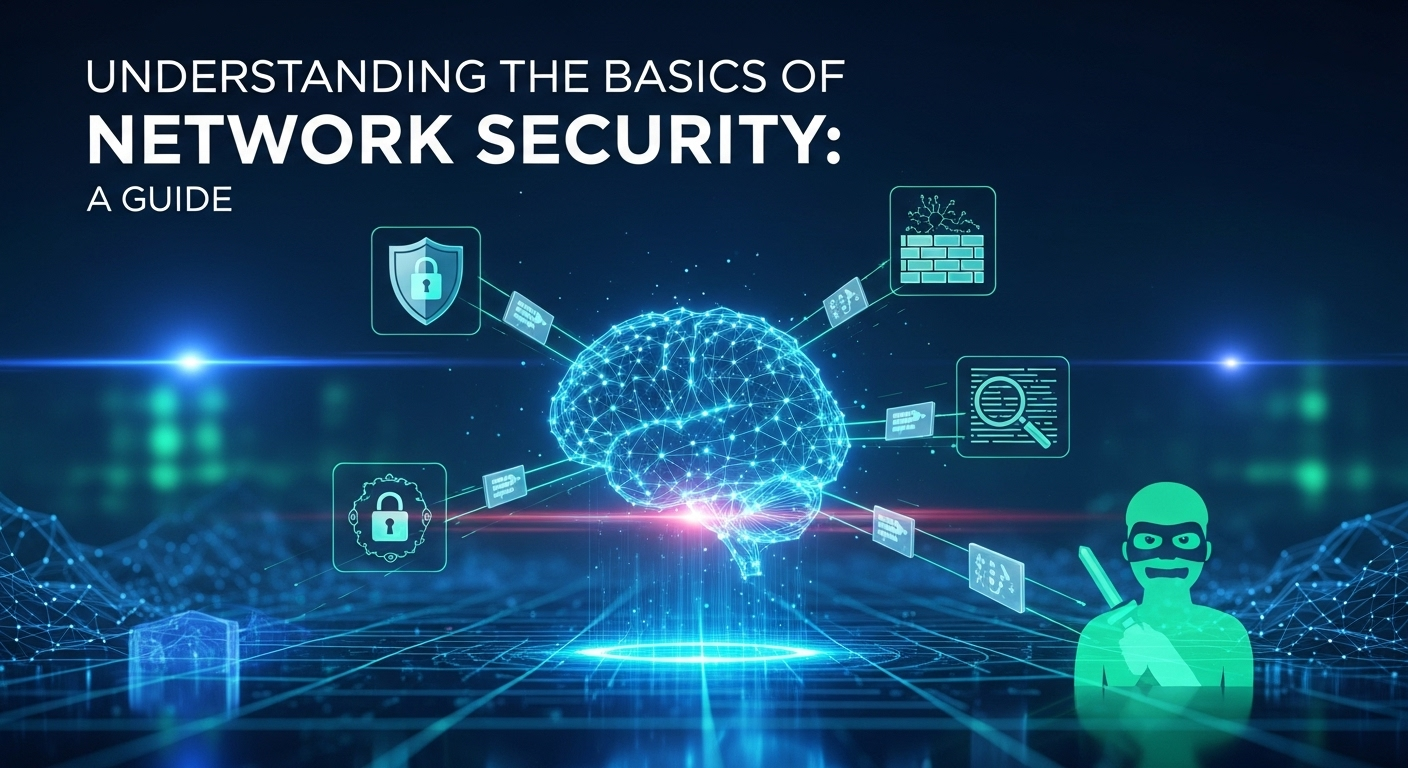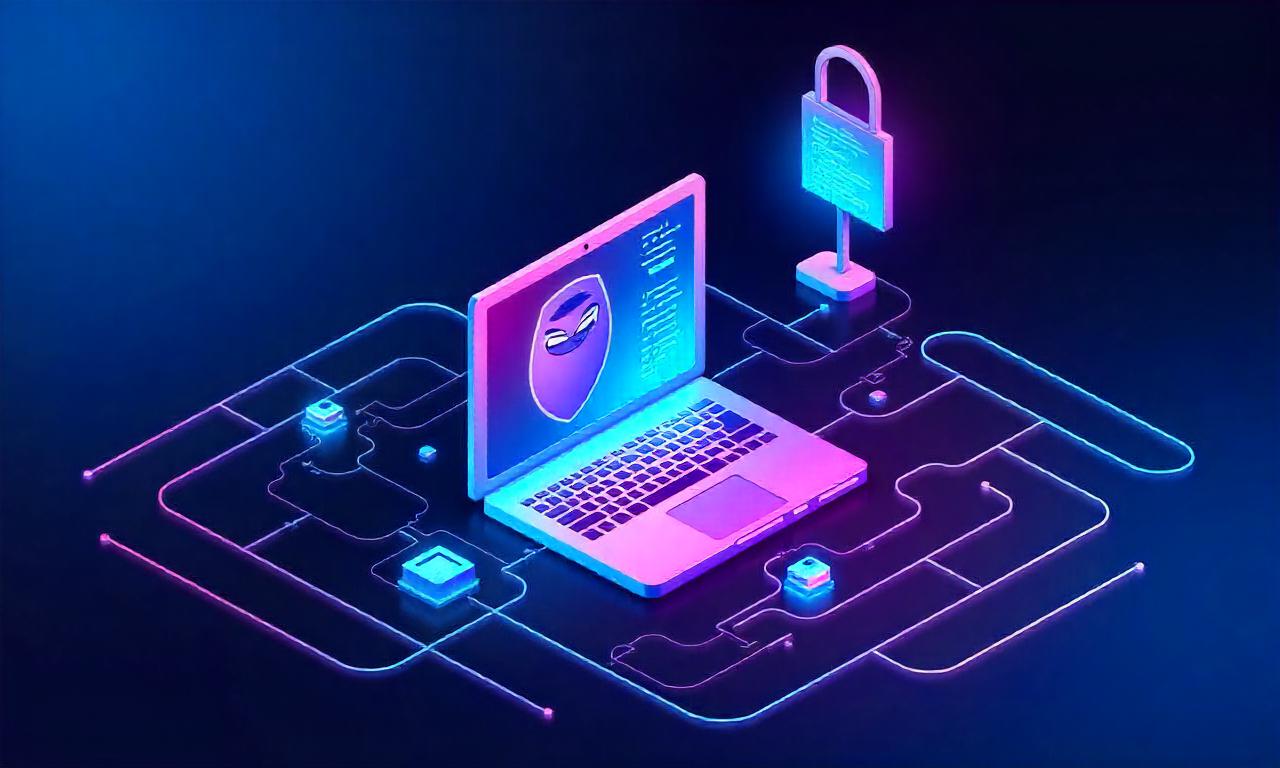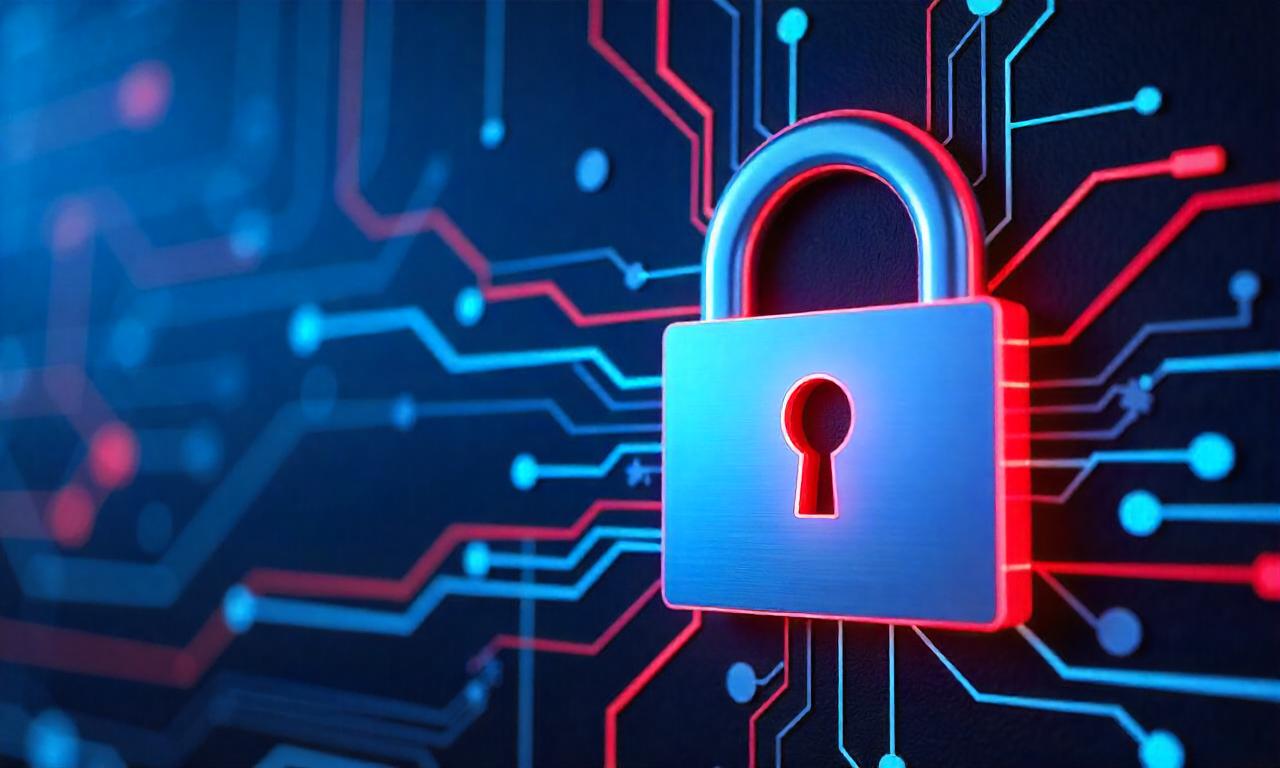In an age where our lives—personal and professional—are inextricably linked to the digital world, the invisible infrastructure that connects us has become a prime target for malicious actors. From multinational corporations to a family's smart home devices, everything relies on a network to communicate. Consequently, understanding the basics of network security is no longer a niche skill for IT professionals but a fundamental necessity for anyone navigating the online landscape. This guide is designed to demystify the core concepts, threats, and best practices, providing a solid foundation for protecting your digital assets in an increasingly connected world.
Table of Contents
ToggleWhat is Network Security and Why is it Crucial?
Network security is a broad term that encompasses a multitude of technologies, devices, and processes. In essence, it refers to any activity designed to protect the usability, reliability, integrity, and safety of a network and its data. It involves a combination of hardware and software solutions, as well as policies and procedures, all working in concert to prevent unauthorized access, misuse, modification, or denial of the network and its resources. Think of it as the digital equivalent of securing a physical building with locks, security guards, alarm systems, and access protocols.
The importance of network security cannot be overstated. A security breach can lead to catastrophic consequences, including the theft of sensitive data like personal information, financial records, and intellectual property. For businesses, this can result in devastating financial losses, regulatory fines (such as those under GDPR or CCPA), and a severe blow to their reputation. For individuals, a compromised network can lead to identity theft, financial fraud, and a profound loss of privacy. In a world driven by data, protecting the network is synonymous with protecting the very foundation of modern communication and commerce.
Furthermore, the threat landscape is constantly evolving. Cybercriminals are becoming more sophisticated, leveraging advanced tools and techniques, including artificial intelligence, to launch attacks. Threats are no longer limited to simple viruses; they now include complex ransomware, stealthy spyware, and large-scale Distributed Denial-of-Service (DDoS) attacks. This dynamic environment makes a proactive and layered approach to network security absolutely essential for survival and success.
The CIA Triad: The Cornerstone of Security
At the heart of all information security, including network security, lies a foundational model known as the CIA Triad. This acronym stands for Confidentiality, Integrity, and Availability. These three principles form a benchmark for evaluating and establishing a robust security posture. A failure in any one of these areas constitutes a security breach.
- Confidentiality: This principle ensures that information is not disclosed to unauthorized individuals, entities, or processes. It's about data privacy and preventing sensitive information from falling into the wrong hands. Encryption is a primary tool for ensuring confidentiality, as it scrambles data so that only authorized parties with the correct key can read it. Access controls, such as passwords and biometric verification, also play a vital role.
- Integrity: This principle guarantees that data is trustworthy and has not been tampered with or altered by unauthorized parties. It's about maintaining the accuracy and consistency of data throughout its lifecycle. Hashing algorithms are often used to verify data integrity. For example, when you download a file, a checksum or hash value may be provided, allowing you to confirm that the file you received is identical to the original and hasn't been corrupted or maliciously modified.
- Availability: This principle ensures that authorized users have reliable and timely access to network resources and data. An unavailable network can halt business operations, cut off communication, and prevent access to critical services. Threats to availability include hardware failures, software bugs, and malicious attacks like Denial-of-Service (DoS), which are specifically designed to make a system or network inaccessible. Redundancy, regular maintenance, and disaster recovery plans are key to upholding this principle.
The Cost of Insecurity
Many individuals and small businesses operate under the dangerous assumption that they are "too small to be a target." This could not be further from the truth. In reality, smaller entities are often seen as softer targets due to their typically weaker security measures. The cost of a security breach extends far beyond the immediate financial impact of stolen funds or data.
The direct financial costs are often staggering. These can include the cost of remediation (hiring experts to clean up the mess), regulatory fines for non-compliance with data protection laws, legal fees, and potential ransom payments in the case of a ransomware attack. According to IBM's Cost of a Data Breach Report 2023, the global average cost of a data breach reached an all-time high of $4.45 million. These figures highlight that investing in security is not a cost center, but a critical investment in risk mitigation.
Beyond the measurable financial loss is the often-irreparable damage to an organization's reputation. Customer trust is hard-earned and easily lost. When a company fails to protect its customers' data, that trust is shattered. The resulting customer churn, negative press, and damage to the brand can have long-lasting effects that far outweigh the initial financial costs of the breach itself. Rebuilding a tarnished reputation can take years, if it's even possible at all.
—
Core Components of a Secure Network
Building a secure network is not about finding a single magic bullet. Instead, it relies on a strategy known as "defense in depth." This layered security approach assumes that any single defense mechanism can and will eventually fail. By implementing multiple layers of security controls, an organization can ensure that if an attacker bypasses one layer, they are immediately confronted by another, slowing them down and increasing the chances of detection.
These layers consist of a mix of physical, technical, and administrative controls. Physical controls include locked server rooms, while administrative controls involve security policies and employee training. The technical controls are the hardware and software components that actively monitor and protect the network. A well-designed network security architecture integrates these components seamlessly to create a formidable barrier against threats.
It is crucial to understand that these components are not "set and forget" solutions. They require constant monitoring, updating, and configuration to remain effective against new and emerging threats. A firewall that isn't updated with the latest rules or an antivirus program with an old signature database offers a false sense of security and can be easily bypassed by modern attack methods.
Firewalls: The First Line of Defense
A firewall is one of the most fundamental network security devices. It acts as a gatekeeper, situated between a trusted internal network (like your corporate or home network) and an untrusted external network (the internet). Its primary job is to monitor incoming and outgoing network traffic and decide whether to allow or block specific traffic based on a defined set of security rules.
Firewalls have evolved significantly over the years. Early firewalls were simple packet-filtering devices that made decisions based on IP addresses and port numbers. Modern firewalls, often called Next-Generation Firewalls (NGFWs), are far more sophisticated. They can perform stateful inspection, which tracks the active state of connections, and even deep packet inspection (DPI), which allows them to analyze the actual content of the data packets. This enables them to identify and block malicious applications or content, even if it's using a standard port.
Intrusion Detection and Prevention Systems (IDS/IPS)
While a firewall is excellent at blocking traffic based on predefined rules, it may not catch more sophisticated or novel attacks. This is where Intrusion Detection Systems (IDS) and Intrusion Prevention Systems (IPS) come in. An IDS is a passive monitoring system; it analyzes network traffic for suspicious activity or policy violations and logs the activity, sending an alert to a system administrator. It detects, but it does not act.
An IPS, on the other hand, is an active system. It is placed inline with the traffic flow and has the ability to not only detect malicious activity but also to actively block it in real-time. For example, if an IPS detects a known malware signature in a data packet, it can drop that packet before it reaches its intended target. Both IDS and IPS can use signature-based detection (looking for known attack patterns) and anomaly-based detection (looking for deviations from normal network behavior), providing a critical layer of defense against active threats.
Virtual Private Networks (VPNs)
A Virtual Private Network (VPN) is a technology that creates a secure, encrypted connection over a less secure network, such as the public internet. This encrypted connection is often referred to as a "tunnel." All data traffic that passes through the VPN tunnel is scrambled, making it unreadable to anyone who might be snooping on the network, such as an ISP, a government agency, or a hacker on a public Wi-Fi network.
The primary use case for VPNs in a business context is to provide secure remote access for employees. When an employee works from home or travels, they can use a VPN to connect to the corporate network as if they were physically present in the office, with all their traffic protected by strong encryption. For individuals, VPNs are an excellent tool for enhancing privacy and security, especially when using public Wi-Fi hotspots, which are notoriously insecure and a common hunting ground for cybercriminals.
—
Common Types of Network Threats and Attacks
To effectively defend a network, you must first understand the enemy. Cyber threats come in many forms, each with its own methods and objectives. Some are designed for quick financial gain, others for long-term espionage, and some simply to cause disruption and chaos. Attackers often combine multiple techniques to achieve their goals, making detection and defense a significant challenge.
The success of many of these attacks hinges on exploiting vulnerabilities. These vulnerabilities can be technical, such as an unpatched software bug, or they can be human. In fact, an overwhelming majority of successful cyberattacks involve some form of human error. An employee clicking on a malicious link, using a weak password, or falling for a social engineering scam can render even the most advanced technological defenses useless.
Therefore, a comprehensive understanding of these common threats is the first step toward building a resilient security posture. By knowing what to look for, both systems and users can become more effective at identifying and thwarting attacks before they can cause significant damage.
Malware: The Digital Plague
Malware, short for malicious software, is a catch-all term for any software intentionally designed to cause damage to a computer, server, client, or computer network. It is one of the most common and versatile threats on the internet. Malware can be delivered through various channels, including malicious email attachments, compromised websites, or even infected USB drives.
The malware family is large and varied, including:
- Viruses: Code that attaches itself to a clean file and spreads to other clean files.
- Worms: Standalone software that replicates itself to spread to other computers, often exploiting a specific security vulnerability.
- Spyware: Software that secretly gathers information about a user and sends it to a third party.
- Ransomware: A particularly vicious type of malware that encrypts a victim's files. The attacker then demands a ransom, usually in cryptocurrency, in exchange for the decryption key. Ransomware can cripple an organization, making all its critical data inaccessible.
Phishing and Social Engineering
Social engineering is the art of psychological manipulation to trick people into divulging sensitive information or performing actions they shouldn't. It preys on human trust, fear, and curiosity. Phishing is the most common form of social engineering, typically carried out via email. A phishing email is designed to look like it comes from a legitimate source—a bank, a popular service like Netflix, or even a colleague—and it will try to coax the recipient into clicking a malicious link or opening a dangerous attachment.
These attacks can be incredibly sophisticated. Spear phishing is a more targeted form of phishing that is directed at a specific individual or organization. The attacker will first gather information about the target from social media or other public sources to make the email more convincing. For example, they might reference a recent project or a colleague's name. The ultimate goal is usually to steal login credentials, install malware, or initiate fraudulent wire transfers.
Denial-of-Service (DoS) and Distributed Denial-of-Service (DDoS) Attacks

Unlike attacks that aim to steal data, the goal of a Denial-of-Service (DoS) attack is to make a machine or network resource unavailable to its intended users. The attacker achieves this by flooding the target with a massive amount of traffic or information, overwhelming its resources and causing it to slow down or crash. A simple DoS attack originates from a single source.
A Distributed Denial-of-Service (DDoS) attack is a much more powerful and common variant. In a DDoS attack, the attacker uses a network of compromised computers, often called a botnet, to launch the attack from thousands or even millions of different sources simultaneously. This makes it incredibly difficult to block the attack, as there isn't a single source IP address to filter. DDoS attacks are often used to disrupt the services of a competitor, as a form of "hacktivism," or to extort money from the target.
—
Essential Network Security Best Practices
Understanding the components of a secure network and the threats it faces is only half the battle. The other half is implementation—translating that knowledge into concrete actions and policies. Proactive network security is not a project with a start and end date; it is a continuous process of assessment, improvement, and adaptation.
These best practices form the operational backbone of a strong security posture. They are the daily, weekly, and monthly routines that keep the digital walls high and the guards vigilant. Adopting these practices helps to minimize the attack surface, reduce the likelihood of a successful breach, and ensure a swift and effective response if an incident does occur.
Effective security is a combination of the right technology, well-defined processes, and, most importantly, educated people. A lapse in any one of these areas can create a vulnerability. Therefore, these best practices should be embraced organization-wide, from the executive suite to the front-line employees.
Strong Access Control and Authentication
One of the most fundamental principles of security is controlling who has access to what. The Principle of Least Privilege dictates that a user should only be given the absolute minimum levels of access—or permissions—that are necessary to perform their job functions. This prevents a user with a compromised account from providing an attacker with widespread access to the entire network.
Implementing strong access control starts with robust authentication. This means moving beyond simple passwords, which are often weak, reused, and easily stolen. Multi-Factor Authentication (MFA) is a non-negotiable best practice in today's threat environment. MFA requires a user to provide two or more verification factors to gain access to a resource, such as something they know (a password), something they have (a security token or a code on their phone), and/or something they are (a fingerprint or facial scan). This provides a critical additional layer of security, as an attacker with a stolen password would still be unable to log in without the second factor.
Regular Patching and Software Updates
Software is never perfect. Developers are constantly finding and fixing security vulnerabilities in their code. These fixes are released in the form of patches or software updates. An unpatched system is an open invitation for attackers, who actively scan the internet for systems with known, unpatched vulnerabilities to exploit. One of the most famous examples is the WannaCry ransomware attack, which spread rapidly by exploiting a vulnerability in older, unpatched versions of Microsoft Windows.
To combat this, organizations must have a robust patch management policy. This involves regularly inventorying all software and systems on the network, monitoring for new security patch releases, testing the patches to ensure they don't break other systems, and deploying them in a timely manner. Automating this process where possible can greatly reduce the window of opportunity for attackers and is a cornerstone of good security hygiene.
Network Segmentation
A flat network, where every device can communicate with every other device, is a security nightmare. If one device on a flat network is compromised, the attacker can often move "laterally" across the network with ease, eventually gaining access to critical assets like domain controllers or databases. Network segmentation is the practice of dividing a computer network into smaller, isolated subnetworks or segments.
This strategy contains breaches by limiting an attacker's ability to move around. For example, you could place all of your point-of-sale systems on one segment, your guest Wi-Fi on another, and your corporate servers on a third. Firewalls and access control lists are then used to strictly control the traffic that is allowed to flow between these segments. If a device on the guest Wi-Fi network gets infected with malware, segmentation prevents that malware from spreading to the critical corporate servers.
—
The Human Element and Security Awareness
Technology can only do so much. You can have the most advanced firewalls, the best antivirus software, and the most sophisticated intrusion detection systems, but all it takes is one uninformed employee clicking on a phishing link to bring the whole house of cards down. For this reason, many experts argue that the human element is the most critical component of any security strategy. People can either be your weakest link or your strongest line of defense.
Building a strong "security culture" within an organization is paramount. This means moving security from an IT-only concern to a shared responsibility that everyone feels a part of. A strong security culture is one where employees are not afraid to report a suspected incident, where they proactively question suspicious emails, and where they understand why security policies are in place, rather than just seeing them as an inconvenience.
This cultural shift doesn't happen by accident. It requires a dedicated and continuous effort from leadership to promote security awareness through training, communication, and policy. When employees are empowered with knowledge, they transform from potential liabilities into a vigilant human firewall that can detect and report threats that technology alone might miss.
| Aspect of Security | Weak Security Culture | Strong Security Culture |
|---|---|---|
| Password Habits | Simple, reused passwords. Passwords written on sticky notes. | Complex, unique passwords. Widespread use of password managers and MFA. |
| Phishing Emails | Users frequently click on links or open attachments without thinking. | Users are skeptical, check sender details, and report suspicious emails to IT. |
| Reporting Incidents | Users are afraid to report mistakes for fear of punishment. Delays in reporting. | Users immediately report suspicious activity or confessed mistakes, enabling a rapid response. |
| Training | A once-a-year, boring presentation that is quickly forgotten. | Ongoing, engaging training sessions, including regular phishing simulations. |
| Policy Adherence | Policies are seen as a hindrance; users actively look for workarounds. | Policies are understood and respected as necessary for protecting everyone. |
The Importance of Security Training
Effective security awareness training is the foundation of a strong security culture. This training should not be a one-time event during employee onboarding. To be effective, it needs to be regular, relevant, and engaging. The goal is to continuously reinforce good security habits and keep employees updated on the latest threats and tactics being used by attackers.
Good training programs cover a range of essential topics, including how to spot a phishing email, the importance of strong passwords and MFA, safe internet browsing habits, and the correct procedures for handling and reporting a security incident. Using real-world examples and interactive elements, such as phishing simulations where fake phishing emails are sent to employees to test their awareness, can make the training much more impactful and memorable.
Creating and Enforcing Security Policies
While training provides the "why," security policies provide the "what." These are formal documents that outline the rules and procedures for network security. A clear, well-documented security policy removes ambiguity and sets clear expectations for all employees. It serves as a guide for acceptable behavior and a framework for a consistent response to security incidents.
Key policies include an Acceptable Use Policy (AUP), which defines how employees are permitted to use company network and internet resources; an Incident Response Plan (IRP), which outlines the step-by-step process for handling a security breach; and a Disaster Recovery Plan (DRP), which details how to restore operations after a major disruption. Crucially, these policies must not only be created but also be consistently enforced and regularly reviewed and updated to reflect the changing technological and threat landscapes.
—
Conclusion
Navigating the world of network security can seem daunting, filled with complex terminology and ever-present threats. However, at its core, it is built on a foundation of understandable principles: protect your data (Confidentiality & Integrity), ensure access to it (Availability), and build multiple layers of defense. The journey to a secure network is a continuous one, requiring a blend of robust technology, well-defined processes, and, most critically, an educated and aware workforce.
From firewalls and VPNs to strong authentication and network segmentation, the tools at our disposal are powerful. But their effectiveness is magnified exponentially when paired with a proactive mindset and a culture of security. By understanding the common threats like malware and phishing, and committing to best practices such as regular patching and continuous training, individuals and organizations alike can transform their networks from a vulnerable target into a resilient and well-defended fortress. In the final analysis, investing in understanding and implementing the basics of network security is one of the most critical investments you can make in our digital future.
—
Frequently Asked Questions (FAQ)
Q1: What is the difference between network security and cybersecurity?
A: Cybersecurity is a very broad umbrella term that refers to the protection of all digital assets, including hardware, software, and data, from cyber threats. Network security is a specific subset of cybersecurity that focuses on protecting the network infrastructure and the data that flows through it. While all network security is a form of cybersecurity, not all cybersecurity relates directly to the network (e.g., protecting a standalone computer or securing an application's code).
Q2: Can I just rely on antivirus software for my network security?
A: No, relying solely on antivirus software provides a very limited and insufficient level of protection. While antivirus is an important component for protecting individual endpoints from known malware, it does nothing to stop many other types of network-based attacks. A comprehensive network security strategy requires a layered approach, including a firewall, access controls, patch management, and employee training, among other measures.
Q3: How can a small business afford network security?
A: While enterprise-grade solutions can be expensive, there are many affordable and even free steps a small business can take to dramatically improve its security. This includes enforcing strong password policies, enabling Multi-Factor Authentication (MFA) on all accounts (many services offer this for free), keeping all software and operating systems updated, training employees on how to spot phishing attacks, and using the built-in firewalls on operating systems and routers. The cost of a breach is almost always far greater than the cost of these preventative measures.
Q4: What is the single most important network security practice?
A: While a layered approach is key, many experts would argue that implementing Multi-Factor Authentication (MFA) is the single most effective practice you can adopt. The vast majority of hacking-related breaches leverage stolen or weak credentials. MFA provides a critical barrier that can stop these attacks in their tracks, even if an attacker manages to obtain a user's password. It provides the biggest security improvement for the least amount of effort.
***
Summary
This guide, "Understanding the Basics of Network Security: A Guide," provides a comprehensive overview of the fundamental principles and practices required to protect digital networks. It begins by defining network security as the set of activities designed to safeguard a network's integrity, usability, and data, emphasizing its crucial role in today's digital world. The article is structured around key pillars: the "why" (the CIA Triad and the high cost of insecurity), the "what" (core components like firewalls, IDS/IPS, and VPNs), the "threats" (common attacks such as malware, phishing, and DDoS), and the "how" (essential best practices like strong access control, regular patching, and network segmentation). A significant focus is placed on the human element, highlighting that security awareness and a strong security culture are as vital as any technological solution. The guide concludes that effective network security is a continuous, layered process involving technology, processes, and people, making it an essential investment for any modern entity.
















